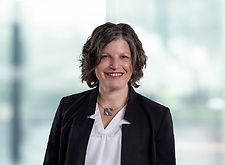Last week we had the opportunity to attend the first annual New York State Tax Summit, a daylong seminar put on by the New York State Department of Taxation and Finance at their offices in Brooklyn. It was a fantastic event, with senior Department officials presenting a wide variety of topics and issues for discussion. There were close to 200 attendees present. And the Agenda was impressive. Here are some of the highlights of the day:
- Following a brief introduction by Acting Commissioner Nonie Manion, the morning session began with Mary Ellen Ladouceur presenting recent update on cases and advisory opinions. Ms. Ladouceur went through a number of the advisory opinions that came out this past year, mostly in the sales tax and income tax areas. Her most significant comments, however, were with regards to the advisory opinion process. As it currently stands, taxpayers are given the ability to withdraw their advisory opinion request before the ruling is formally issued. The Department is considering discontinuing this practice because they are finding that many taxpayers ultimately decide to withdraw their request if they get an answer that they don’t like. This then means the months of work that went into the process are absolutely wasted. She also indicated that her office is trying to deal with the current backlog of advisory opinions. In our experience, we still have wait at least a year to get an answer, particularly in sales tax cases, which seem to move the slowest.
- Next up was a great review of the “life cycle of assessment” by Argi Oleary, Michael Fulmer, and Kristin Dence. Mr. Fulmer walked through what happens on the initial processing review of the tax returns; Ms. Dence walked through the audit process; and Ms. Oleary walked through the budget and collections process. All three of the speakers highlighted the process that a return goes through once it is filed, first running through a set of “rules” to determine whether the return was correctly prepared and then, if it fails one of these rules, either being automatically adjusted or going through a process of manual review and possibly selection for audit. Ms. Dence pointed out some of the key differences between Desk Audit and Field Audit that are of particular interest to practitioners. She noted that because Desk Audits typically occur soon after a return is filed, a Consent to Extend the statute of limitations is typically not needed (or even an option). She also remarked on the more automated processes in Desk Audit, where cases are closed with an assessment when a taxpayer doesn’t respond, without additional follow-up by an auditor. Ms. O’Leary highlighted some of the Department’s successful collection efforts, including the profitable driver license suspension program; a “self-service” Installment Payment Agreement for liabilities less than $20,000 and periods under 36 months; and the online voluntary payment option through a taxpayer’s Online Services account.
- Michelle Casey of Income Tax/Field Audit Management presented an excellent overview of current issues for flow through entities and nonresident taxpayers. In addition to talking about some of the recent cases in the area, Ms. Casey talked through the four more important issues that the audit group is focused on: the 2010 Amendment to Tax Law 632(a)(2) related to IRC 338(h)(10) sales (more info here); the forced S election rules under Tax Law 660; the 2009 rules related to sales of partnership interests by nonresidents under Tax Law 631(b)(1)(A)(1)l (more info here); and issues related to tiered partnerships.
Next up were breakout sessions in the afternoon, where Department officials covered a number of specific topics in smaller groups.
- Corporate tax reform: The session covering New York’s overhaul of its corporate tax structure had the largest panel of the day, with some of the primary architects of the legislation and draft regulations (Robert Plattner, Matthew Gokey, Jessica Lesczinski, Deborah Liebman and Jennifer LeBlanc) as well as representatives of Corporate Franchise Audit, and Zal Kumar from NYC Department of Finance. The focus of the session was not so much to go through the reform itself, but to discuss practical concerns and issues with the first filing year under the new regime upon practitioners. Mr. Gokey noted that the process of passing the legislation had been such a long and complicated ordeal that the difficulties of implementation had taken them somewhat by surprise. Some of the key area of discussion included: the draft regulations and FAQs; the ability under the new rules to “silo” different types of financial instruments for purposes of determining which instruments to mark to market and elect the 8 percent safe harbor; the importance of properly completing the form to calculate the Prior Net Operating Loss Subtraction Pool and to separate that pool out from net operating losses sustained after January 1, 2015; and forms to use for corporations dissolved in 2015 and 2016. Mr. Kumar emphasized that New York City essentially piggybacked on New York’s corporate reform provisions, but only for C corporations and with some important distinctions. He noted that S corporations using the old General Corporation Tax provisions that still incorporate an issuer’s allocation percentage for investment income will use 2014 numbers for 2015 and 2016. Mr. Dobis stated that they had developed 50 new criteria for corporate audit selection, that they were encouraging both auditors and taxpayers to close out audits of old tax years filed under the pre-reform rules, and that they were beginning to train auditors on the new corporate tax rules.
- Residency issues: Francis Leo of the Income Tax Field Audit Management group presented at a breakout session covering the nuts and bolts of residency cases. As always, this was a lively discussion addressing the types of things the tax department is seeing in these cases. One of the things we talked about in this session was the expanded use of cell phone records in day count audits, and talking through the difficulties of sometimes obtaining these records. We also talked about subpoenas, and the tax department’s ability to subpoena taxpayers. It was noted by one of the department officials in the room that while notification to the taxpayer that the auditor has subpoenaed materials isn’t required, it is certainly reasonable for the department to do so, and they encourage auditors in this regard.
- Sales tax and e-commerce: An all-star panel with some of the great sales tax minds in the Department (Rob Plattner, Daniel Wood, Eric Songayllo, James Connolly and Rick Graf) presented on all things related to ecommerce, sales tax, and Mr. Connolly talked through many of the new sales tax nexus issues coming up in cases, and also talked through one of the hotter topics in the nexus world: whether the Quill physical-presence standard really still is good law.
- Collections issues: Argi O’Leary, accompanied by many of her regional managers, led a candid discussion of collection issues and challenges. The Department has recently entered into a contract with a new vendor, Performant, to handle certain collection cases. Unlike the prior vendor, Performant has a litigation subcontractor that it can use to perfect out-of-state judgments for difficult collection cases. In addition, Ms. O’Leary discussed the various data matching efforts, including a new initiative by the Special Investigations Unit to match professional licenses with collection cases. Ms. O’Leary also remarked on the settlement between the New York Attorney General’s office and the major credit rating agencies, which could have an impact on whether tax warrants can appear on credit reports.
All in all, it was a great day. Kudos to the tax department for putting on such a great event.


